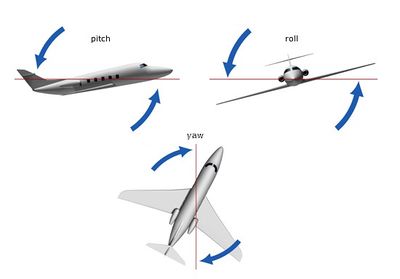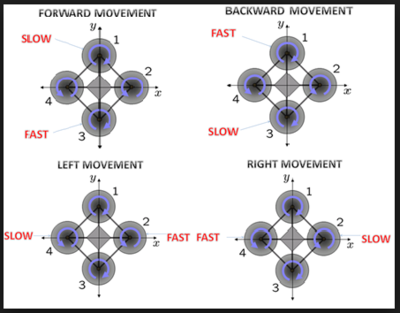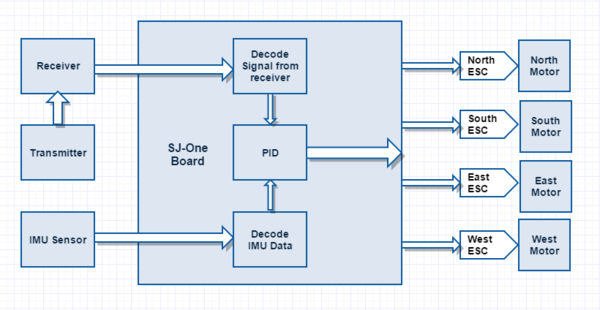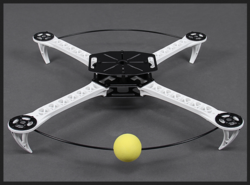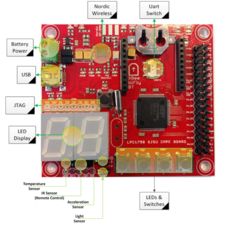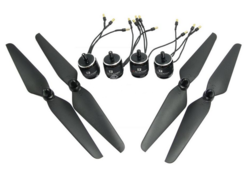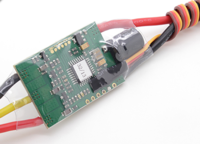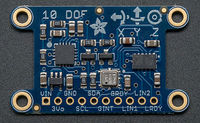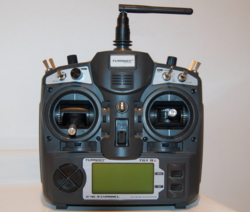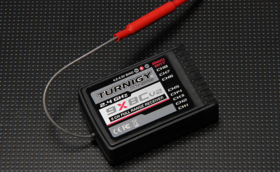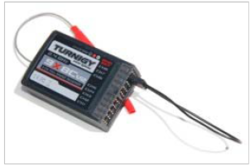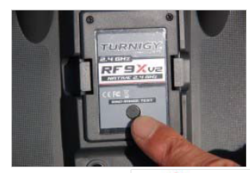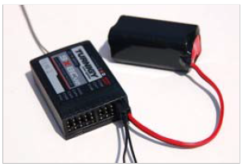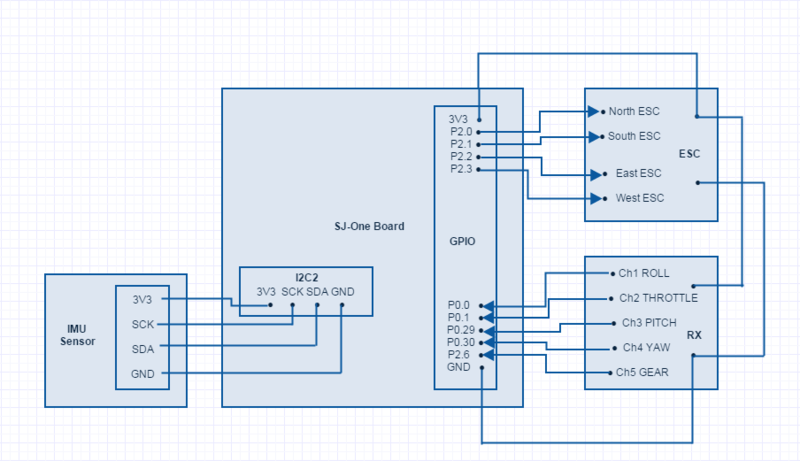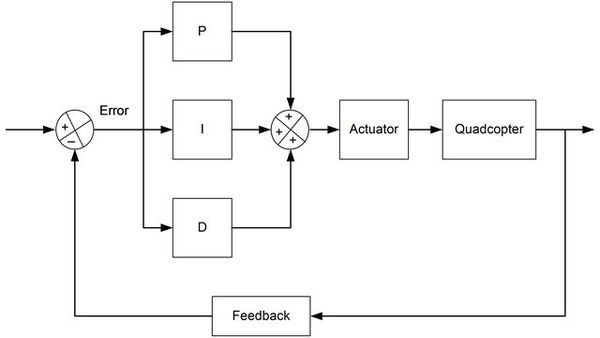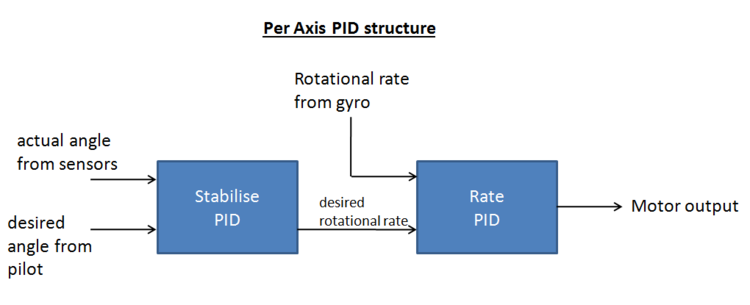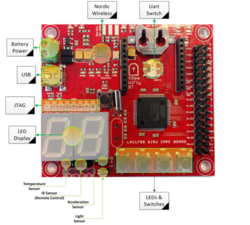Difference between revisions of "S15: Drone"
Proj user20 (talk | contribs) (→Parts List & Cost) |
Proj user20 (talk | contribs) (→Schedule) |
||
| Line 103: | Line 103: | ||
| Completed | | Completed | ||
| 03/31/2015 | | 03/31/2015 | ||
| − | |||
|- | |- | ||
! scope="row"| 3 | ! scope="row"| 3 | ||
| Line 111: | Line 110: | ||
| Completed | | Completed | ||
| 03/31/2015 | | 03/31/2015 | ||
| + | |- | ||
| + | ! scope="row"| 5 | ||
| + | | 04/07/2015 | ||
| + | | 04/14/2015 | ||
| + | | Study quad-copters software framework provided by Preet | ||
| + | | Completed | ||
| + | | 04/14/2015 | ||
|- | |- | ||
! scope="row"| 4 | ! scope="row"| 4 | ||
| Line 132: | Line 138: | ||
| Completed | | Completed | ||
| 04/07/2015 | | 04/07/2015 | ||
| − | |||
| − | |||
| − | |||
| − | |||
| − | |||
| − | |||
| − | |||
| − | |||
! scope="row"| 6 | ! scope="row"| 6 | ||
| 04/14/2015 | | 04/14/2015 | ||
Revision as of 03:40, 25 May 2015
Contents
- 1 Grading Criteria
- 2 DRONE
- 3 Abstract
- 4 Objectives & Introduction
- 5 Team Members & Responsibilities
- 6 Introduction
- 7 Schedule
- 8 Parts List & Cost
- 9 Design & Implementation
- 10 Testing & Technical Challenges
- 11 Conclusion
- 12 References
Grading Criteria
- How well is Software & Hardware Design described?
- How well can this report be used to reproduce this project?
- Code Quality
- Overall Report Quality:
- Software Block Diagrams
- Hardware Block Diagrams
- Schematic Quality
- Quality of technical challenges and solutions adopted.
DRONE
Abstract
Unmanned Aerial Vehicles (UAVs) are gaining popularity in military operations as surveillance and weapons platforms, UAV's are being produced more than the conventional aircrafts thesedays. A recent rule in 2012, where an UAV less than a 55 pounds can be used for commercial purpose has brought lot of research in industries. A commonly used UAV is a quad-copter, which is used widely in commercial applications like delivering pizzas's, couriers,etc. Apart from commercial use, a quadcopter could can save someone's life by reaching the spot early in emergency situations before an ambulance and deliver first aid kit. The project goal was to build a basic Quadcopter from scratch which can hover and balance itself.
Objectives & Introduction
The idea is to design an autonomous Quadcopter capable of sustaining a stable flight via wireless communication. The goals of the project can be divided mainly into the following four parts:
- To interface IMU 10-dof sensor to SJ-One Board and decode the readings coming from sensor.
- To interface the 8Channel Turnigy receiver with our SJ-One and normalize and scale those readings.
- To use SJ-One Board as the Flight control board which takes readings continuously from the sensor and the receiver to compute the PID values.
- To give the computed PWM values to all the four ESCs.
This should enable the Quadcopter to have a balanced flight.
Team Members & Responsibilities
- Bhushan Gopala Reddy
- Karthik Govindaswamy
- Rishikesh Nagare
- Mayur Salve
- Manuj Shinkar
Introduction
Basics of Quadcopter
- This figure shows the Yaw, Pitch and Roll movement of a quadcopter.
- Rotation around the front-to-back axis is called roll.
- Rotation around the side-to-side axis is called pitch.
- Rotation around the vertical axis is called yaw.
- Our Quadcopter is implemented in the '+' orientation.
- The motors are named North, South , East and West motor.
- FigureX shows the ESC and motor setup where CW is clockwise and CCW means counter-clockwise.
- The CW and CCW setup of the motor and propellers is very important to have control over the yaw parameter.
- FORWARD movement:
Motor1 will spin faster and Motor3 will spin slower resulting in an forward tilt of the Quadcopter.
- BACKWARD movement:
Motor1 will spin slower and Motor3 will spin faster resulting in an backward tilt of the Quadcopter.
- LEFT movement:
Motor2 will spin faster and Motor4 will spin slower resulting in an leftward tilt of the Quadcopter.
- RIGHT movement:
Motor2 will spin slower and Motor4 will spin faster resulting in an rightward tilt of the Quadcopter.
Arming/Disarming the Quadcopter
Arming/disarming facility in Quadcopters is a precautionary measure provided to prevent the motors from spinning accidentally. Imagine if the transmitter is on full throttle and we switch on the power supply. Quadcopter propellers are the last thing you want to be near. Arming/disarming facility is quintessential to prevent anyone from getting hurt as well as to prevent damage to the quadcopter.
The gear channel is used to arm or disarm the Quadcopter. A simple toggle switch is to switch between these modes.
Schedule
Show a simple table or figures that show your scheduled as planned before you started working on the project. Then in another table column, write down the actual schedule so that readers can see the planned vs. actual goals. The point of the schedule is for readers to assess how to pace themselves if they are doing a similar project.
| Sl.No | Start Date | End Date | Task | Status | Actual Completion Date | ||||||
|---|---|---|---|---|---|---|---|---|---|---|---|
| 1 | 03/17/2015 | 03/24/2015 | Ordered parts for quad-copter | Completed | 03/24/2015 | ||||||
| 2 | 03/25/2015 | 03/31/2015 | Assembled quad-copter | Completed | 03/31/2015 | ||||||
| 3 | 03/25/2015 | 03/31/2015 | Tested quad-copter for the design and stability with the help of flight control board(KK 2.1.5) | Completed | 03/31/2015 | ||||||
| 5 | 04/07/2015 | 04/14/2015 | Study quad-copters software framework provided by Preet | Completed | 04/14/2015 | ||||||
| 4 | 04/01/2015 | 04/07/2015 | Calibrated all the ESC's | Completed | 04/07/2015 | ||||||
| 5 | 04/01/2015 | 04/07/2015 | Interfaced Motors and RC to SJ-One Board | Completed | 04/07/2015 | ||||||
| 5 | 04/01/2015 | 04/07/2015 | Scaling the throttle,pitch,roll and yaw to the appropriate range | Completed | 04/07/2015 | 6 | 04/14/2015 | 04/21/2015 | Interface and test 10-DOF IMU sensor by Adafruit. | Completed | 04/21/2015 |
| 7 | 04/21/2015 | 05/05/2015 | Understanding and Tuning PID values. | Completed | 05/05/2015 | ||||||
| 8 | 05/05/2015 | 05/19/2015 | Final Testing. | Ongoing | 05/24/2015 |
Parts List & Cost
Give a simple list of the cost of your project broken down by components. Do not write long stories here.
| Item# | Part Desciption | Vendor | Part Number | Qty | Cost |
|---|---|---|---|---|---|
| 1 | SJ One Board | 1 | $80.00 | ||
| 1 | Motors and Propellers | Tiger motors | 1 | $89.99 | |
| 2 | Afro ESC 30 Amp Speed Controller (SimonK Firmware) | Turnigy | 4 | $56 | |
| 3 | Turnigy 9X 9Ch Transmitter w/ Module & 8ch Receiver (Mode 2) (v2 Firmware) | Turnigy | 1 | $59.99 | |
| 4 | Turnigy nano-tech 4000mAh 3S1P 25-50C Lipo Pack | Turnigy | 1 | $26.90 | |
| 5 | Hobbyking SK450 Glass Fiber Quadcopter Frame 450mm | Hobbyking | 1 | $17.99 | |
| 6 | Landing Kit set | Hobbyking | 1 | $9.49 | |
| 7 | Hobbyking Quadcopter Power distribution board | Hobbyking | 1 | $3.39 | |
| 8 | Hobbyking Lipoly low voltage alarm | Hobbyking | 1 | $2.15 | |
| 9 | Turnigy Battery Strap | Hobbyking | 1 | $1.59 | |
| 13 | 3.5 mm bullet heads for power break distribution board | 1 | $1.83 | ||
| 14 | iMax B6 Battery Charger | 1 | $33.46 | ||
| 15 | UART USB to serial cable | 1 | $6.99 | ||
| TOTAL | $389.77 |
Design & Implementation
This section describes the hardware and software implementation. The quadcopter consist of the main frame, flight controller board (SJ-One Board), motors with ESC and the battery system. The Airframe used in this project is Hobbyking SK450 Glass Fiber Quadcopter Frame 450mm.
System Design
The quadcopter's flight controller system is discussed in the block diagram shown on the left. The subsystem consists of following:
- SJ-One Board
- Turnigy Transmitter and Receiver
- Adafruit 10-DOF IMU sensor
- Brushless Motors
- ESC(Electronic Speed Control)
The power is fed to the motors using the power distribution board. The power comes from 3 Cell 11.1V LIPO battery Pack.
Hardware
Frame
The Quadcopter frame must be symmetrical to make the code simpler to implement and avoid any unnecessary complications. Ours is the SK450 Glass Fiber Frame of size 450mm. This is a high quality glass fiber frame while the arms are constructed from ultra durable polyamide nylon. This quad not only looks great, its very well thought out as well. Assembly is a breeze with pre-threaded brass sleeves for all of the frame bolts, so no lock-nuts are required. It utilizes one size of bolt for the entire build, making the hardware very easy to keep in order and only requiring one size of hex wrench to assemble.
SJ-One Board
The flight control board used for this project is SJ-One Board. This control board will receive values continuously from the sensor and remote. The values applied from the RC and the current sensor values are used to calculate the values to be applied to the propellers. The SJ-One board uses ARM Cortex -M3 MPU to calculate few hundred times a second.
Brushless Motors and Propellers
Brushless motors are the best when it comes to speed and low power consumption. The motors used for this project are AIR Gear 350 brushless motors. These motors have 920Kv rating and have low noise and high speed response. The propellers used came with the same motors and were self tightening and bullets holders. The motors are made of good quality material and are suitable for 1400-1700 g quadcopter.
The propellers dimensions are as follows:
Diameter - 9.4 inch
Thread Pitch - 4.5 inch
ESC(Electronic speed control)
The PWM signals generated by the Flight control board is fed to the ESC's which provide signal to the motors. The ESCs are running on SimonK firmware which gives a smooth power response and is suitable for multi-rotor use without the need to program or adjust settings.
Calibration
The calibration of the ESC's were done manually. Below is the step wise discussion of manual calibration method.
- First, remove all propellers! Disconnect the power to the ESCs. Connect the ESC PWM input directly to the receiver's throttle channel, or to a servo tester.
- Set the radio throttle or servo tester to the highest position, then connect power to the ESC. The motor should produce a series of initialization beeps increasing in pitch, followed by another beep
matching the pitch of the last initialization beep. This indicates that the calibration mode has been entered, and the pulse length has been learned.
- Move the stick or knob to the lowest position. Two beeps of the same pitch should be emitted. This indicates that the low pulse length has been learned. If the RC Car-style reversible mode has been
enabled (RC_PULS_NEUTRAL), move the stick or knob to the center, and wait for three beeps. This indicates that the neutral (center) pulse length has been learned.
- The ESC will then save the settings and exit calibration mode. If the input is still at the same position, the ESC will arm (producing a higher pitched, long beep), and function normally.
Inertial Measurement Unit
The Inertial Measurement Unit (IMU) is an integrated sensor device which measures accleration and tilt by Accelerometer, angular velocity and orientation by Gyroscope and gravitational forces by Magnetometer. Inertial Measurement Unit by Adafruit provides 10 DOF(actually 11) i.e 3-axis accelerometer, 3-axis gyroscope, 3-axis magnetometer barometric pressure sensor and temperature sensor. These values are sent to SJ-1 board over I2C, where the further processing is done by SJ-1 board to determine the angular position and orientation of the Quadcopter.
Remote Controller
The new transmission module (TGY-9X) is of type FHSS (Frequency-hopping spread spectrum) and uses frequency hopping. This technique has a high transmission reliability because it is insensitive to interference. It has a plastic casing of compact type. Its handling is excellent and the sleeves are adjustable. The antenna is directional. 167x34mm LCD screen (black and white) is fairly well mixed and makes a pretty good readability in daylight. 6 keys allow access to many menus, selection and settings.
Binding Procedure
- Insert the special cable (loop) in the channel 'BAT' of the receiver and not in the channel 'BIND' as indicated. Connect power supply to the receiver in position 'BIND' and wait until the LED flashes red.
- Press the button 'Test Range bind' the transmission module (back of radio) and, without releasing it, turn on the transmitter, the LED will stop flashing and remain lit constantly.
- Release the button and turn off the radio module. Then remove the special cord and disconnect the receiver battery, the receiver is ready.
- The effect is immediate and does not allow more than 3sec button 'test range bind' button.
| Pin Number | Function |
| P0.1 | RC-Ch1 - Roll |
| P0.30 | RC-Ch2 - Throttle |
| P0.0 | RC-Ch3 - Pitch |
| P0.29 | RC-Ch4 - Yaw |
| P2.6 | RC-Ch5 - Gear |
Note: Use a LiPo battery pack of 11.1V 2500mAh to power the transmitter. This is very convenient to use as opposed to using (8x) AA batteries which discharge quickly.
Hardware Interface
In this section, you can describe how your hardware communicates, such as which BUSes used. You can discuss your driver implementation here, such that the Software Design section is isolated to talk about high level workings rather than inner working of your project.
| Sl. No | Port and Pin Number | Pin Type | Purpose |
|---|---|---|---|
| 1 | P2.0 | PWM | North ESC |
| 2 | P2.1 | PWM | South ESC |
| 3 | P2.2 | PWM | East ESC |
| 4 | P2.3 | PWM | West ESC |
| Sl. No | Port and Pin Number | Pin Type | Purpose |
|---|---|---|---|
| 1 | P0.0 | GPIO | Pitch (Rx Channel 3) |
| 2 | P0.1 | GPIO | Roll (Rx Channel 1) |
| 3 | P0.29 | GPIO | Yaw (Rx Channel 4) |
| 4 | P0.30 | GPIO | Throttle (Rx Channel 2) |
| 5 | P2.6 | GPIO | Arm/Disarm (Rx Channel 5) |
Software Design
Show your software design. For example, if you are designing an MP3 Player, show the tasks that you are using, and what they are doing at a high level. Do not show the details of the code. For example, do not show exact code, but you may show psuedocode and fragments of code. Keep in mind that you are showing DESIGN of your software, not the inner workings of it.
Flowchart
PID Controller
PID (proportional-integral-derivative) is a closed-loop control system that tries to get the actual result from IMU sensors closer to the desired result from the RC transmitter by computing the output values. The popularity of PID controllers can be attributed partly to their robust performance in a wide range of operating conditions and partly to their functional simplicity, which allows engineers to operate them in a simple, straightforward manner.
PID formula
There are 3 variables in a PID controller, namely P(Proportional), I(Integral), and D (Derivative). P depends on the present error, I on the accumulation of past errors, and D is a prediction of future errors, based on current rate of change of the Quadcopter.
The effect of P,I and D
- Proportional Gain Coefficients
Kp = Proportional element of the PID, reduces large part of the overall error.
- Increasing Kp will overshoot and oscillate, but reach the desired state faster.
- Increasing Kp will reduce steady state error, but after a certain limit, increasing Kp will only increase the overshoot.
- Kp reduces the rise time.
- Integral Gain Coefficients
Ki = Integral element of the PID, reduces the final error accumulated over time.
- Ki eliminates the steady state error, but after a certain limit, increasing Ki will only increase the overshoot.
- Ki reduces the rise time.
- Derivative Gain Coefficients
Kd = Derivative element of the PID, counteracts Kp, and Ki when the output changes quickly.
- Kd decreases the overshoot.
- Kd reduces the settling time.
To obtain the control and stability of the quadcopter we do the following, for example consider we are doing it for pitch axis, the user provides some input to the quadcopter which becomes the requested value, at the same time sensor outputs the present value for the pitch axis for the quadcopter. The three alogorithms P, I and D finds the difference between the requested and the present values which is calculated as an error and apply these values on the motor which are the applied values to reduce the error. Similarly it is done for other 2 axis i.e Roll and Yaw to obtain the overall stability of the Quadcopter.
There were few parameter which were addressed while writing the PID algorithm
- Sample Time - The PID algorithm functions best if it is evaluated at a regular interval. If the algorithm is aware of this interval, we can also simplify some of the internal math.
- Derivative Kick - Not the biggest deal, but easy to get rid of, so we’re going to do just that.
- On-The-Fly Tuning Changes - A good PID algorithm is one where tuning parameters can be changed without jolting the internal workings.
- Reset Windup Mitigation -We’ll go into what Reset Windup is, and implement a solution with side benefits
- On/Off (Auto/Manual) - In most applications, there is a desire to sometimes turn off the PID controller and adjust the output by hand, without the controller interfering
- Initialization - When the controller first turns on, we want a “bumpless transfer.” That is, we don’t want the output to suddenly jerk to some new value
- Controller Direction - This last one isn’t a change in the name of robustness per se. it’s designed to ensure that the user enters tuning parameters with the correct sign.
Flight Controller
Fight controller is a brain of any Quadcopter or multicopter. In our project, we have used SJ-One board as our flight controller, it continuously reads data from IMU sensors and inputs from RC transmitter. The flight controller performs algorithmic calculation received from sensors and RC and apply these adjustments on each rotor. Quadcopter has 4 degrees of freedom i.e pitch, roll , yaw and altitude, and with the flight controller each degree of freedom can be controlled by adjusting the thrusts on each rotor and keep the quadcopter balanced.
Implementation
This section includes implementation, but again, not the details, just the high level. For example, you can list the steps it takes to communicate over a sensor, or the steps needed to write a page of memory onto SPI Flash. You can include sub-sections for each of your component implementation.
Overall System Algorithm
- Initialize all the tasks
- If no errors arm the quadcopter by the channel 5 on RC (errors are found on LED display)
- Update the sensor data and send them to SJ-One board
- Similarly update RC input and send them to SJ-One board.
- Run PID algorithm continuously on sensor data and RC data to generate PID coefficients for each axis(Pitch, Roll and Yaw).
- Apply the PID coefficients on motors through ESC's to obtain the self balance of the quadcopter.
- repeat from step 3 until the quadcopter is disarmed.
Remote Control transmitter
- The input is sent from RC transmitter to RC receiver.
- We are using 4 channels for Throttle, Pitch, Roll and Yaw and 5th channel for arming and disarming the quadcopter.
- All the channels from the receiver is connected to 5 GPIO pins and Interrupts are enabled for each pin.
- Time is recorded when there is a rising edge and the time is recorded when there is a falling edge on the corresponding pin.
- The difference is recorded to find the width of the pulse which is between 1 ms and 2000 ms.
- Normalized value is calculated using scaling factor and pulse width. Below are the range of normalized value
- Throttle 0 to 100
- Pitch -45 to 45
- Roll -45 to 45
- Yaw -45 to 45
IMU sensors
- calibrate the sensors and find the offset
- Read sensor data of accelerometer, gyroscope and magnetometer at 100HZ
- Add the offset to the raw data from sensors
- Covert the raw data into expected data required by PID algorithm before sending it to SJ-One board(for example gyro data is converted from degress per second into radians per second, accelerometer data is divided by 16)
- repeat from step 2
Testing & Technical Challenges
Describe the challenges of your project. What advise would you give yourself or someone else if your project can be started from scratch again? Make a smooth transition to testing section and described what it took to test your project.
Include sub-sections that list out a problem and solution, such as:
My Issue #1
The value received for the roll axis from RC transmitter would shoot up suddenly leading to improper balance of the Quad-copter.
Solution - During the shoot up above certain limit which would affect the stabilization, we would neglect the that value and would read the previous value.
My Issue #2
When testing the quadcopter for pitch axis and roll axis, the north motor was not as responsive as the south motor. Similarly west motor was not that responsive as east motor. We spent lot of time debugging this error.
Solution - The ESC's were not giving the expected output to the motor, We ended up changing the 2 ESC's.
My Issue #3
Frequently encounter I2C short
Solution - Had to reset SJ- One board atleast 2-3 times. Could not figure out exact reason and solution for I2C short
Discuss the issue and resolution.
My Issue #4
Conclusion
Conclude your project here. You can recap your testing and problems. You should address the "so what" part here to indicate what you ultimately learnt from this project. How has this project increased your knowledge?
Project Video
Upload a video of your project and post the link here.
Tuning of pitch axis for the Quadcopter https://www.youtube.com/watch?v=Ztgx5FDS018
References
- Preetpal Kang, Professor of CMPE 244, Computer Engineering, Charles W. Davidson College of Engineering, San Jose State University, Feb-May 2015.
- http://www.instructables.com/id/Basic-Quads-Systems-My-Easy-Quad-Build/step1/Basic-Quads-Systems-My-Easy-Quad-Build/
- http://www.hobbyking.com/hobbyking/store/index.asp
- http://brettbeauregard.com/blog/2011/04/improving-the-beginners-pid-introduction/
Acknowledgement
Thanks a lot to Professor Preetpal Kang who provided us with the basic framework, which helped us have a great start. Thanks to Brett Beauregard for providing a well documented version of PID for beginners.
Appendix
You can list the references you used.
